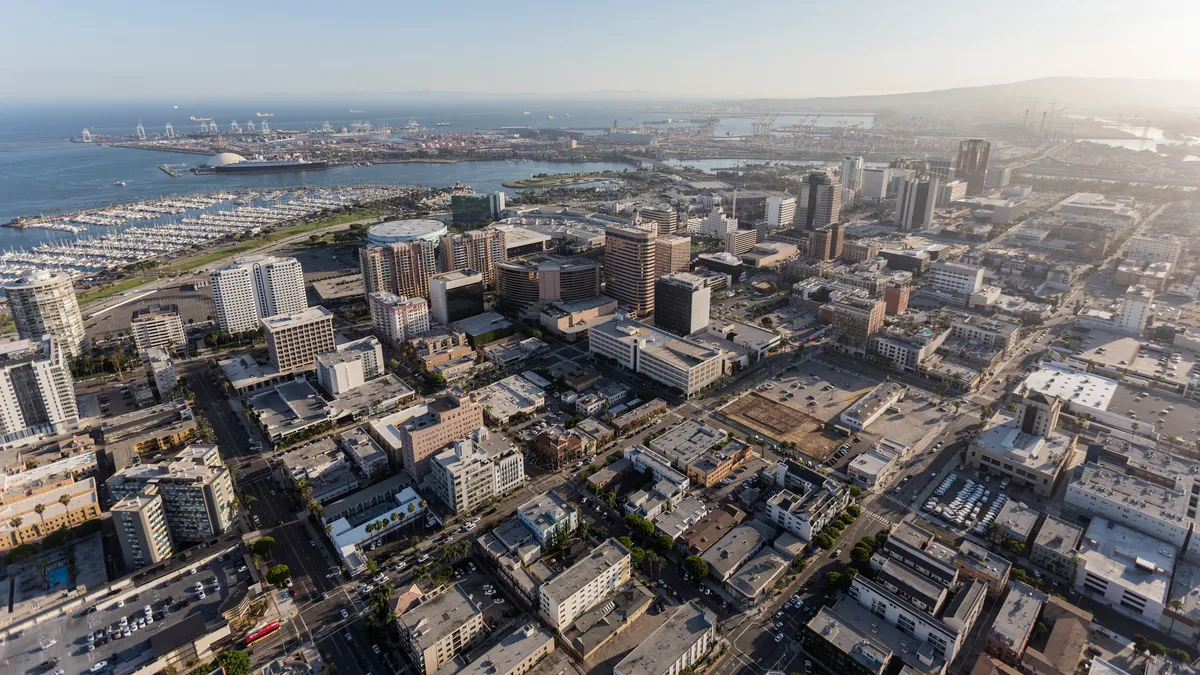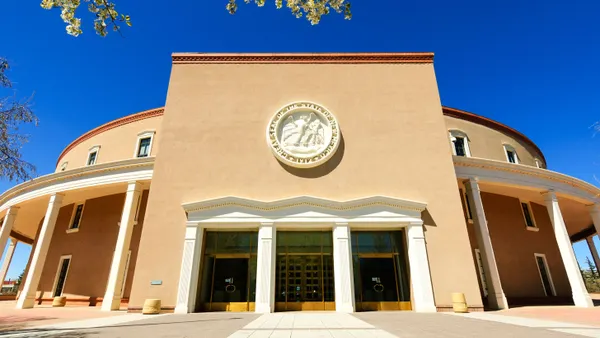Dive Brief:
- Covanta recently assumed new financial obligations for the publicly-owned Southeast Resource Recovery Facility (SERRF) in Long Beach, California, to avoid its imminent closure. Volumes are projected to drop by around 50% due to a state law that removes diversion credits for jurisdictions using the facility.
- Under the amended contract, which went into effect on Feb. 1 after approval by the Long Beach City Council, Covanta is now responsible for the majority of operating and maintenance expenses. The company is also entitled to all tip fee and energy revenues from SERRF.
- SERRF was projected to lose $2 million per month due to the volume decline, meaning the city could have closed it as soon as this month. The plant is now set to run through at least June 2024. An estimated $6 million has been set aside for possible decommissioning, but no future plans are finalized.
Dive Insight:
California was already down to just two mass burn combustion facilities after prior closures. Last year’s passage of AB 1857, sponsored by a regional legislator, is now putting pressure on at least one of them.
Under a decades-old state law, California jurisdictions must divert at least 50% of their waste each year. Previously, waste sent to “transformation” facilities could count for up to 10% of that.
In recent years, an estimated 148 local jurisdictions sent waste to SERRF, in part to claim that credit. According to the Long Beach Energy Resources Department, this constituted about 50% of inbound volume and was a “significant revenue source.” Jane Hermsen, manager of the agency’s electric generation bureau, said via email that volumes dropped from an estimated 42,500 tons in December to 26,800 tons in January.
SERRF had already been losing about $4 million a year since 2018, when the expiration of a power purchase agreement cut more than 60% of its electricity revenue. The site could have seen its funds go negative by May 2023 without any change. The city will no longer be responsible for operating expenses, but it must still pay $1.4 million “for carbon allowance purchases under the AB 32 Cap and Trade program,” as well as $1.3 million for staff, related contract oversight costs and “efforts to evaluate future opportunities for the SERRF facility.” Long Beach is also obligated to sell electricity SERRF generates and pass that revenue back to Covanta, and it will continue delivering its waste to the site.
Covanta declined to comment on next steps for the facility beyond details in the city’s report. During the Jan. 17 council meeting, the city was asked how Covanta expects to run a profitable operation going forward.
"They have access to different types of waste streams that aren't municipal solid waste. They get different pricing for those waste streams. They'll supplement with the city's waste streams,” said Bob Dowell, director of the Energy Resources Department. He added that electricity pricing may rise slightly in this time frame, but in terms of the broader operations, “they take that full risk upon themselves.”
Covanta’s CEO recently told Waste Dive his general goal is to avoid closing plants without first exploring alternatives. He sees further potential in the Western region as well the higher-value waste streams the company’s environmental services division handles. The company purchased area business Biologic Environmental Services and Waste Solutions last year, a sign of how it might seek to boost such volumes.
Long Beach has contracted with HDR Engineering to assess further opportunities for the SERRF site and will soon be releasing a request for proposals about organics processing systems to help comply with state requirements under SB 1383.
Local residents from groups including East Yard Communities for Environmental Justice testified in opposition to extending SERRF’s lifespan or replacing it with any potential anaerobic digestion projects. Many speakers said they preferred a compost site along with related recycling and reuse infrastructure. In written comments, group member Kimberly Amaya said the city has “the power to set us on a true zero waste path that will lead to less generation of waste and allow our city to process and handle waste within our city while bringing more local jobs.”
In their report to the council, city staff described the facility as an “interim solution” as organics systems ramp up. If it closes in the meantime, they anticipate disposal costs will “significantly increase” to potentially transfer waste to landfills in Riverside County, San Bernardino or Arizona.












